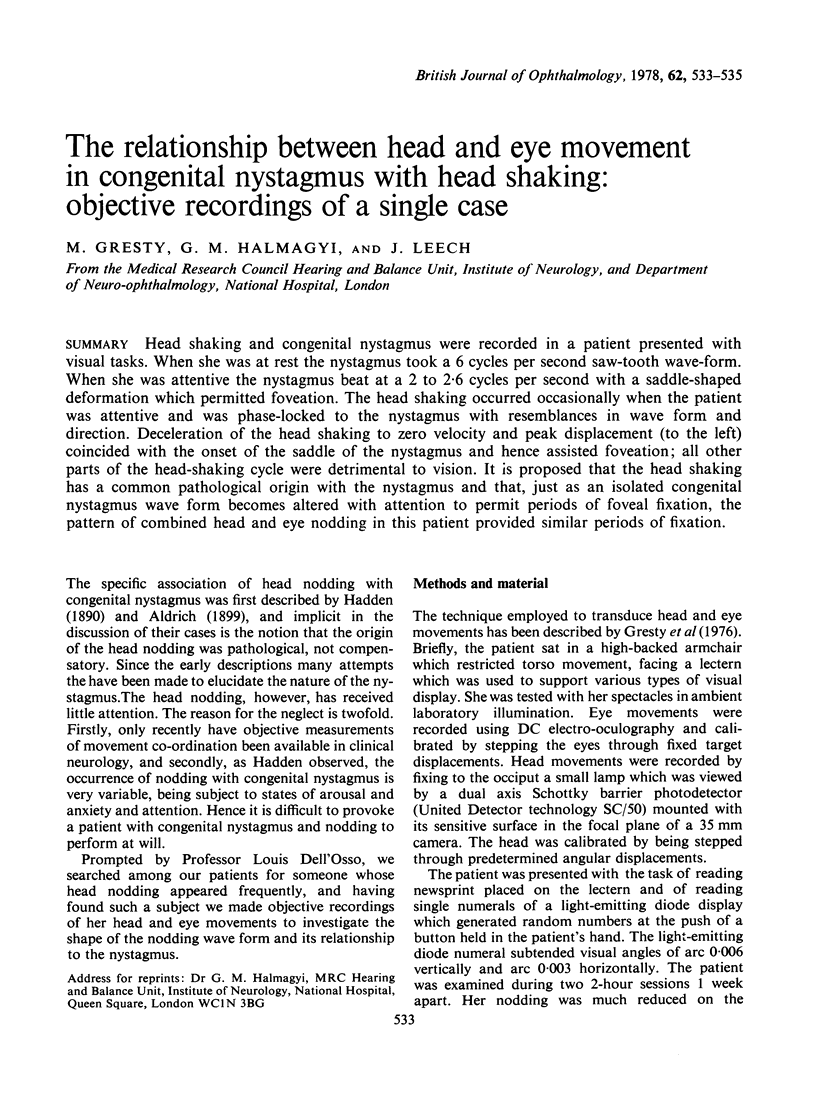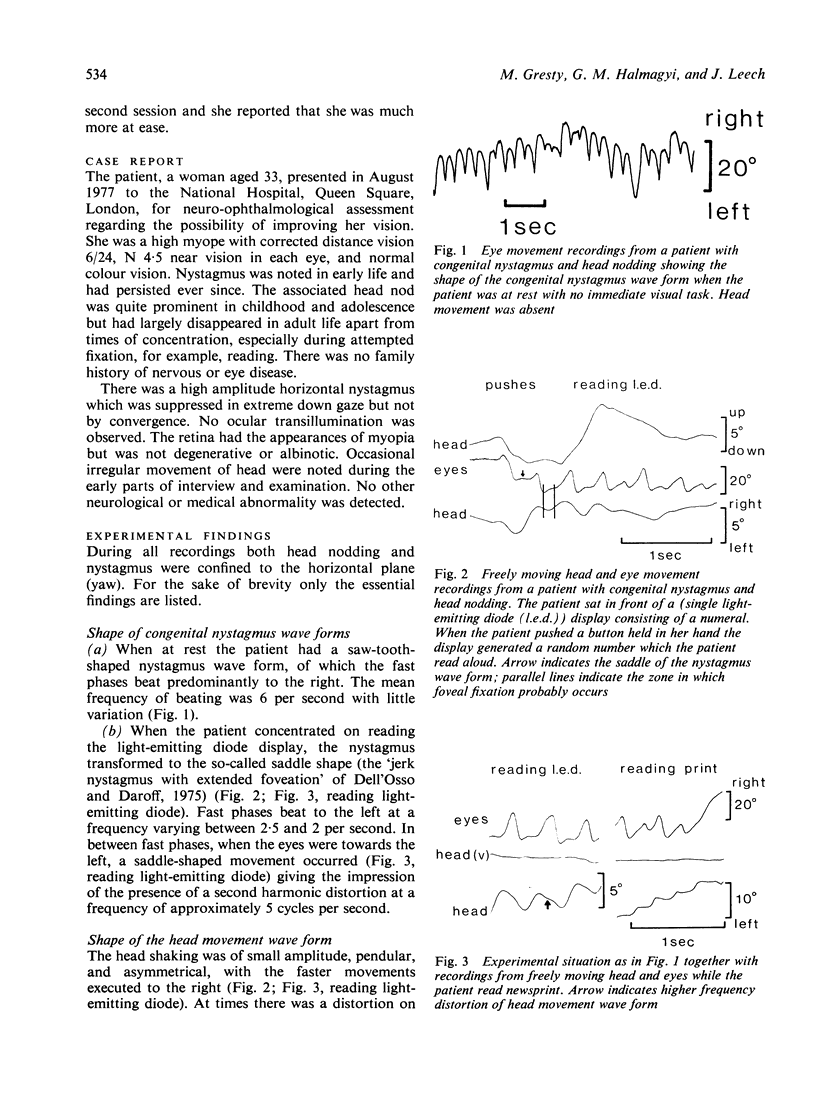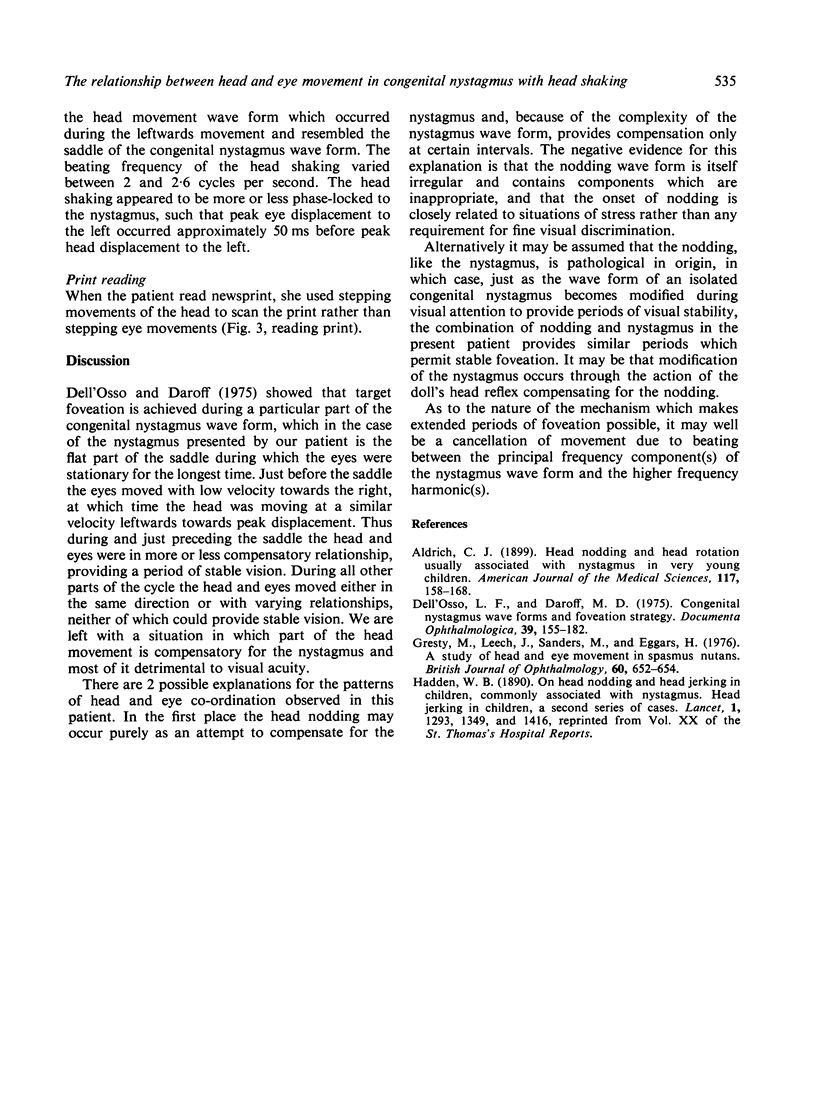Abstract
Head shaking and congenital nystagmus were recorded in a patient presented with visual tasks. When she was at rest the nystagmus took a 6 cycles per second saw-tooth wave-form. When she was attentive the nystagmus beat at a 2 to 2.6 cycles per second with a saddle-shaped deformation which permitted foveation. The head shaking occurred occasionally when the patient was attentive and was phase-locked to the nystagmus with resemblances in wave form and direction. Deceleration of the head shaking to zero velocity and peak displacement (to the left) coincided with the onset of the saddle of the nystagmus and hence assisted foveation; all other parts of the head-shaking cycle were detrimental to vision. It is proposed that the head shaking has a common pathological origin with the nystagmus and that, just as an isolated congenital nystagmus wave form becomes altered with attention to permit periods of foveal fixation, the pattern of combined head and eye nodding in this patient provided similar peroids of fixation.
Full text
PDF


Selected References
These references are in PubMed. This may not be the complete list of references from this article.
- Dell'Osso L. F., Daroff R. B. Congenital nystagmus waveforms and foveation strategy. Doc Ophthalmol. 1975 Nov 21;39(1):155–182. doi: 10.1007/BF00578761. [DOI] [PubMed] [Google Scholar]
- Gresty M., Leech J., Sanders M., Eggars H. A study of head and eye movement in spasmus nutans. Br J Ophthalmol. 1976 Sep;60(9):652–654. doi: 10.1136/bjo.60.9.652. [DOI] [PMC free article] [PubMed] [Google Scholar]


